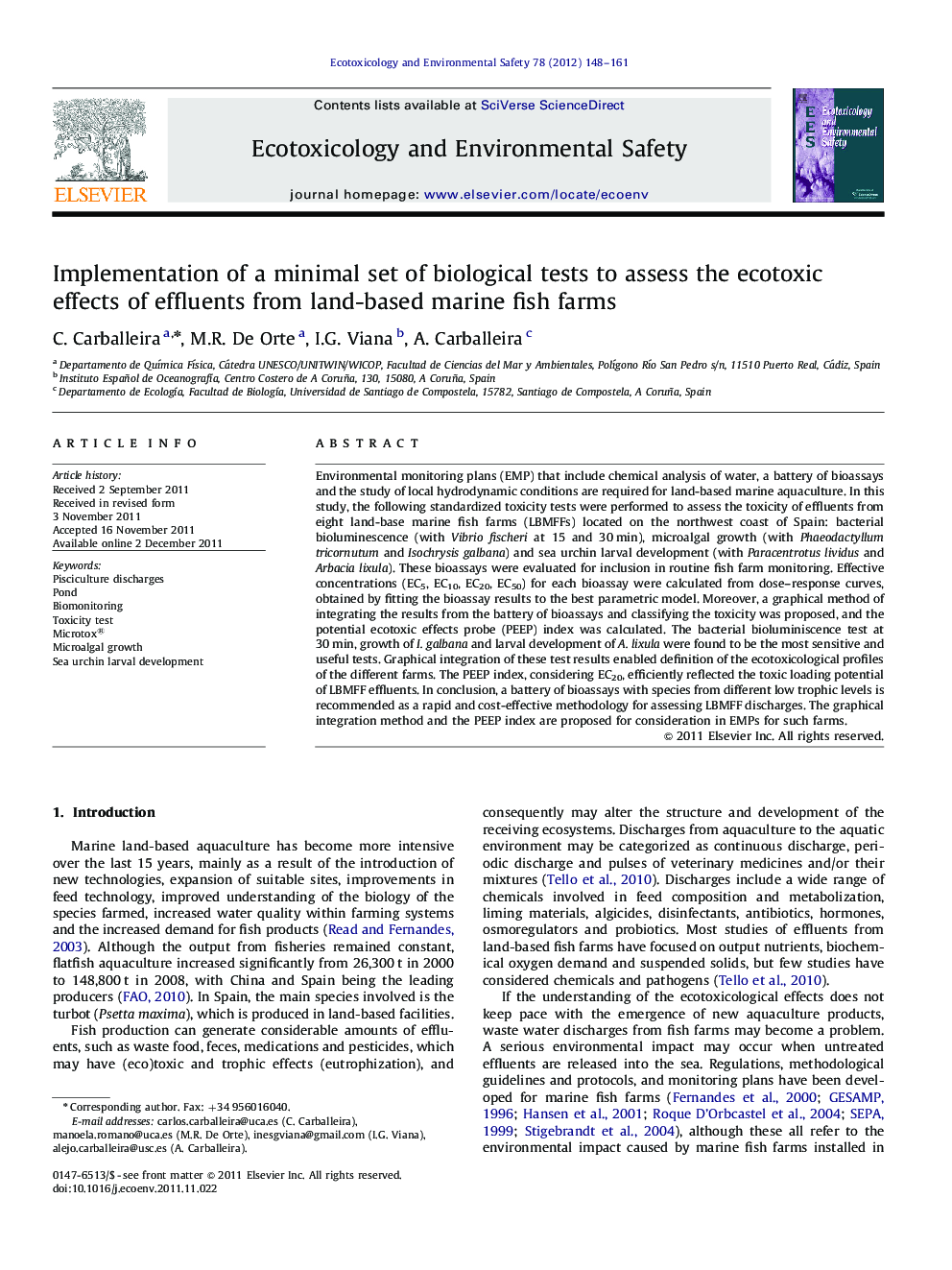| Article ID | Journal | Published Year | Pages | File Type |
|---|---|---|---|---|
| 4420903 | Ecotoxicology and Environmental Safety | 2012 | 14 Pages |
Environmental monitoring plans (EMP) that include chemical analysis of water, a battery of bioassays and the study of local hydrodynamic conditions are required for land-based marine aquaculture. In this study, the following standardized toxicity tests were performed to assess the toxicity of effluents from eight land-base marine fish farms (LBMFFs) located on the northwest coast of Spain: bacterial bioluminescence (with Vibrio fischeri at 15 and 30 min), microalgal growth (with Phaeodactyllum tricornutum and Isochrysis galbana) and sea urchin larval development (with Paracentrotus lividus and Arbacia lixula). These bioassays were evaluated for inclusion in routine fish farm monitoring. Effective concentrations (EC5, EC10, EC20, EC50) for each bioassay were calculated from dose–response curves, obtained by fitting the bioassay results to the best parametric model. Moreover, a graphical method of integrating the results from the battery of bioassays and classifying the toxicity was proposed, and the potential ecotoxic effects probe (PEEP) index was calculated. The bacterial bioluminiscence test at 30 min, growth of I. galbana and larval development of A. lixula were found to be the most sensitive and useful tests. Graphical integration of these test results enabled definition of the ecotoxicological profiles of the different farms. The PEEP index, considering EC20, efficiently reflected the toxic loading potential of LBMFF effluents. In conclusion, a battery of bioassays with species from different low trophic levels is recommended as a rapid and cost-effective methodology for assessing LBMFF discharges. The graphical integration method and the PEEP index are proposed for consideration in EMPs for such farms.
▶ Land-based marine fish farm (LBMFF) effluents are considered to have low toxicity. ▶ A meaningful battery of standardized tests was first applied to assess LBMFF impact. ▶ The most sensitive species and dilution were selected for LBMFF monitoring plans. ▶ Triaxial diagram and PEEP index allowed to compare effluent toxicities between farms.
